Craig Hensley was particularly animated during a recent Webinar presentation! A favorite Texas Parks and Wildlife presenter, Texas Nature Trackers Biologist, special friend of our two Valley Texas Master Naturalist chapters, and frequent Valley visitor, Craig’s excitement was infectious — all about pollinators and the plants they use.
And he extended a personal invitation for an upcoming challenge — I’m excited too, and I’ve already signed up. You can, too, at this link:
https://www.inaturalist.org/projects/2021-texas-pollinator-bioblitz
Craig has very graciously given me permission to use some of his most excellent information to help promote this important event:
2021 Texas Pollinator BioBlitz
October 1 – October 17, 2021
Sign in or sign up at www.iNaturalist.org to join the project.
What’s it all about? At the link, https://www.inaturalist.org/projects/2021-texas-pollinator-bioblitz click on the arrow in the green circle after the words, Project Requirements to see all the critters that count for this BioBlitz; the plants they pollinate are to be included, too. This is a mega BioBlitz and important for scientists, biologists and naturalists to continue learning more about how to protect our unique ecosystem.
Craig’s Brief Overview of Pollination:
- Estimated 75% of flowering plants require a pollinator — 1/3 of those species provide humans food
- Approximately 1 in 3 bites of food or drink require a pollinator
- Pollinators feed birds and other wildlife as part of the food chain or through their pollination efforts
- Bees as a group are keystone species — loss of them ripples through ecosystems
- Bees are indicator species — healthy pollinator populations, healthy ecosystems
- This all relates ultimately to habitat — in order for birds, mammals and the other array of wildlife to thrive we need pollination services
Pollination, of course, is the movement or transfer of pollen from the anther of one flower to the stigma of another or the same flower — within a species. Pollinations goal: produce new seeds for maintaining the species.
Interestingly, pollen is moved several ways:
- Animal (biotic) pollination, as in bees physically moving pollen from one plant to another.
- Abiotic pollination, moving pollen without the aid of another organism, such as via wind, water, gravity
Pollinators include
- Bees
- Wasps
- Flies
- Beetles
- Butterflies
- Moths
- Bats
- Ants
- Hummingbirds
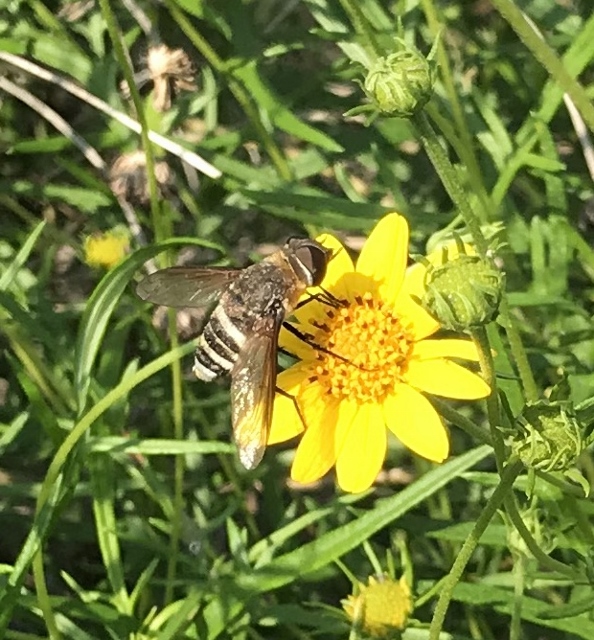
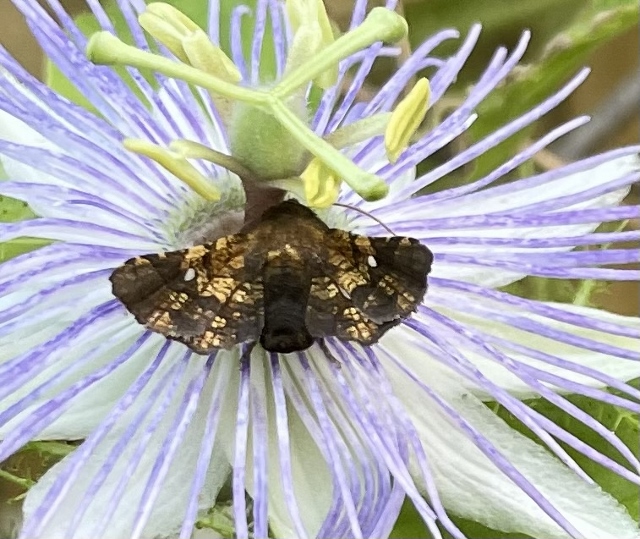
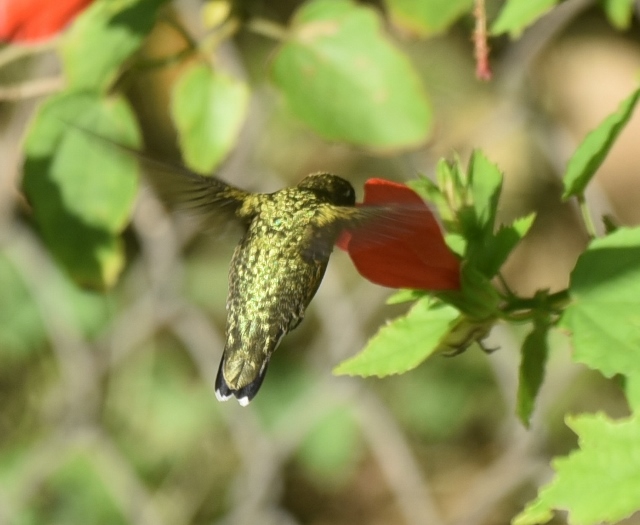
In other countries, there’s good cause to believe rodents, lizards, geckos, skinks and opossums contribute to pollination — more like unintentional consequences, but still, certainly possible — I’ve watched an opossum shuffle around the garden during the nighttime. Lizards and geckos may be after nectar, but a transfer of pollen is probably taking place, or at the very least, the disturbance may make the flowers more accessible for insect pollinators, according to mom.com/momlife/. Small pollinators include slugs, gnats and true bugs (Hemiptera), according to U.S. Department of Agriculture Web fact sheets.
Wind pollinated plants include wheat, rice, corn, rye, barley.
So, what’s important in our gardens this fall that will help out and entice pollinators here in the Valley?
According to Craig’s presentation, composites are ideal for pollinators — including monarchs! Composites provide loads of pollen for bees and beetles and provide quantities of nectar in one flower head. Many composites have two types of flowers: One type is the ray part — like the yellow petals of a sunflower. The second type of flowers are the small tube-like flowers that are clustered together making a disc shape, again like the sunflower, the brown center.
We’ve had some cooler weather, a bit of rain — if your yard is anything like mine, it’s beginning to look end-of-summer-overgrown. I know you’re tempted to start clearing it up a bit — but don’t! Wait until after the BioBlitz! Allow pollinators as much free rein as possible on your lands. Spend some time each day checking out what’s using your flowers and blooms and document your findings by uploading photos onto iNaturalist.
We have some Valley specialties like Turk’s cap (Malvaviscus drummondii), adored by hummingbirds and visited by butterflies and Mexican carpenter bees.
Valley composites where you can study bugs, bees and butterflies include Hairy Wedelia Wedelia acapulcensis [Zexmenia hispida]; skeleton leaf golden eye, (Viguiera stenoloba); Maximillian sunflower, (Helianthus maximiliani) — perhaps more abundant here are the common sunflower, (Helianthus annuus).
And get this: One of the best nectar sources for fall migrating monarchs, according to Craig, is frostweed (Verbesina virginica) — our Valley species is V. microptera and hopefully just as important.
I love frostweed. I have three stands of it in various parts of the yard — some of it more than six feet tall. It’s just now beginning to bloom. After hearing Craig’s presentation, I ventured out the next day to check on my frostweed. It was deliciously buggy and entertaining with all the pollinators I found on the flowers.
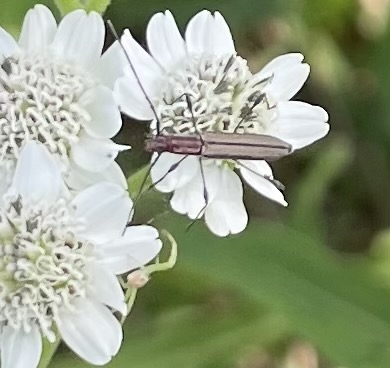
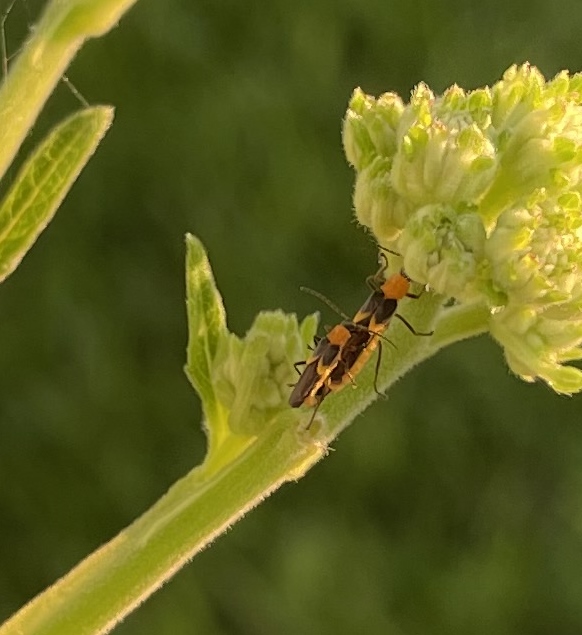
important pollinators (Photo by Anita Westervelt)
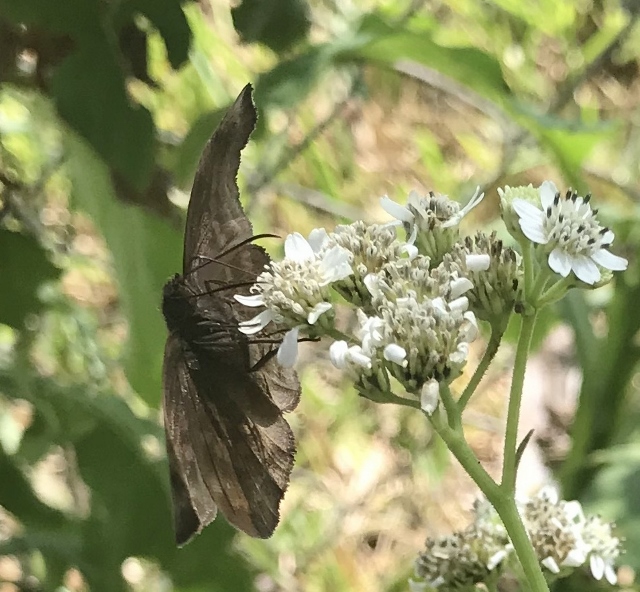
I was thrilled, also, to see Tall Goldenrod (Solidago altissima), also a composite, featured in Craig’s presentation as an important nectar source. I’m hoping the seaside goldenrod (Solidago sempervirens) is equally as valuable. A friend gave me a plant from her yard last fall. It was blooming in February just before the freeze; it died back to the ground and has been working on building stalks all year. The multi-stemmed plant is now six feet tall, the tips of which are heavily laden with buds. I’m hoping it will burst into bloom in time for the October Pollinator BioBlitz.
An all-time great Valley nectar plant is crucita, also called blue mistflower and fall-blooming mistflower (Chromolaena odorata), also a composite.
Although not composites, don’t overlook Runyon’s violet wild petunia, (Ruellia nudiflora); Texas frog fruit (Phyla nodiflora); scorpion’s tail (Heliotropium angiospermum); and common balloon vine (Cardiospermum halicacabum) which is always good for some bugs, bees and butterflies.
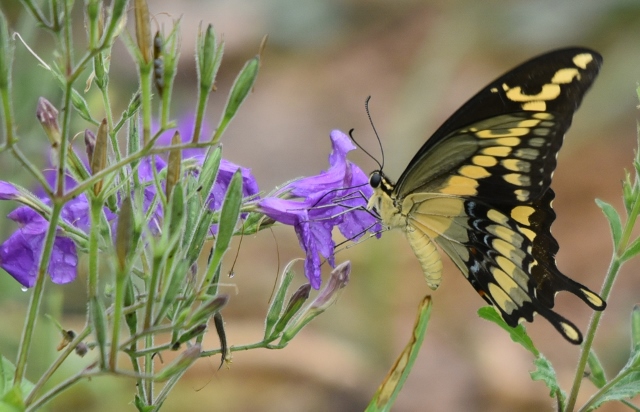
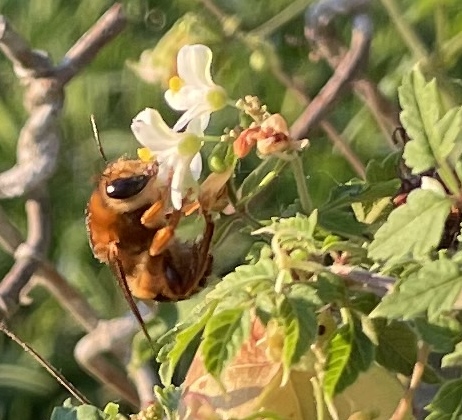
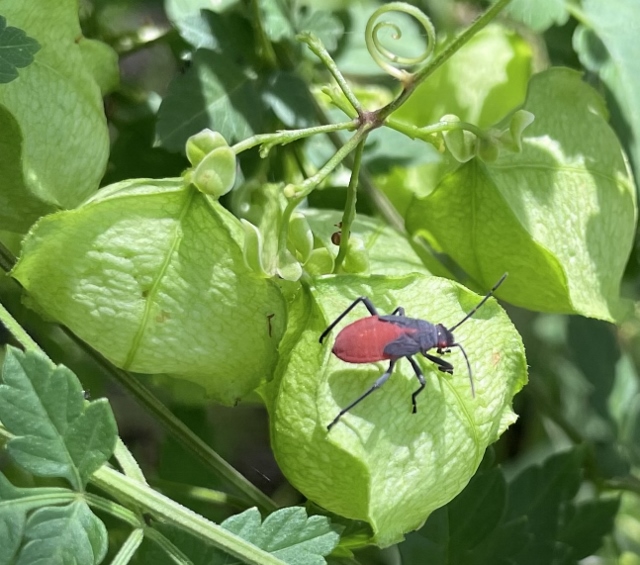
Not all bugs are pollinators, some are more villainous, like crab spiders, mantids and assassin bugs, lying in wait to devour pollinating insects.
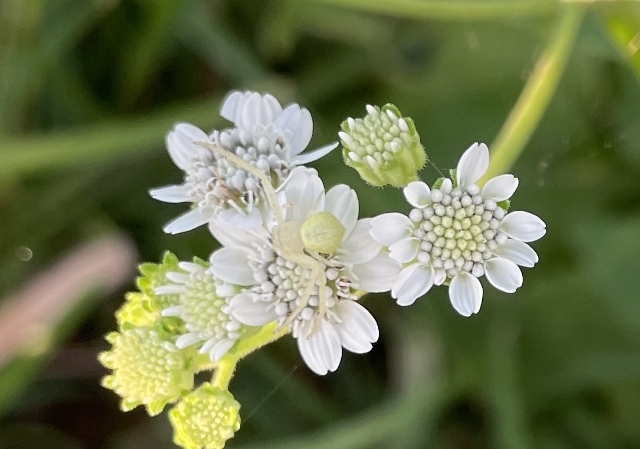
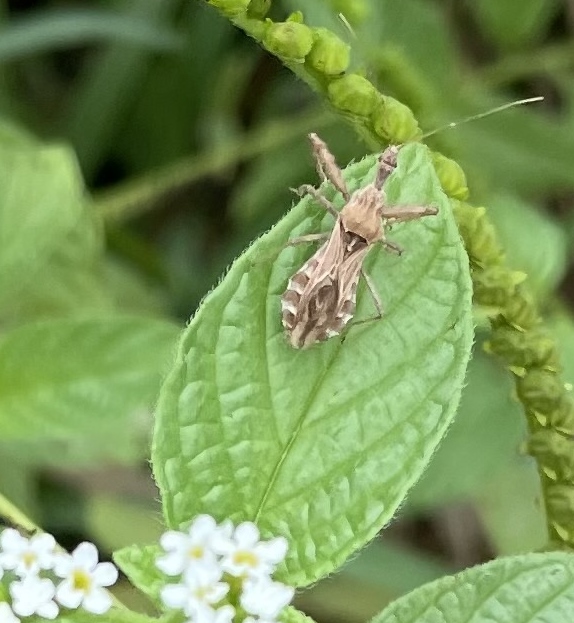
Here’s the challenge: get outdoors armed with camera or phone camera — get close to your plants, study them, and take your best shot — upload your discoveries onto iNaturalist.
Craig cautions us not to overlook what we might look upon as weeds, like straggler daisy, aka prostrate lawn weed, a composite, (Calyptocarpus vialis) and certainly a verdant and aggressive grower in the right conditions in Valley lawns — still — blooms: nectar, pollen for some.
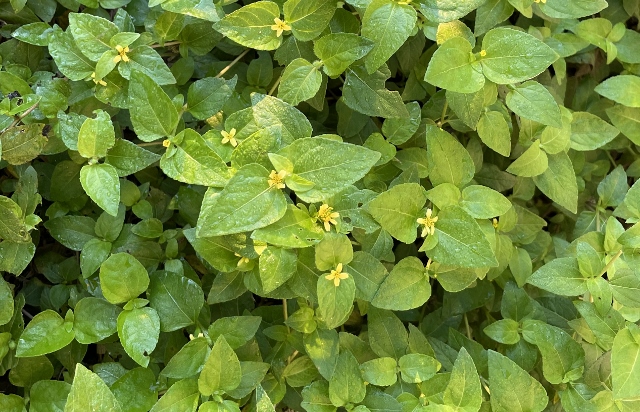
In closing, Craig summed up his presentation with key considerations:
- Focus on diversity of species and time of flowering — spring through fall and look at plants that not only produce nectar but also serve as host plants for butterflies.
- If your garden isn’t what you would like it to be, think ahead to next year.
- Gather seeds or purchase plants from local sources.
When buying seed packets, a rule of thumb, according to Craig, if it has California poppy seeds in it, it isn’t for our region!